Get Data

Get Url Data
Usage scenario: Obtain information related to webpage URLs and save the obtained information to variables or tables. Assuming the opened website is: https://www.amazon.com/s?k=nike&ref=nb_sb_noss_2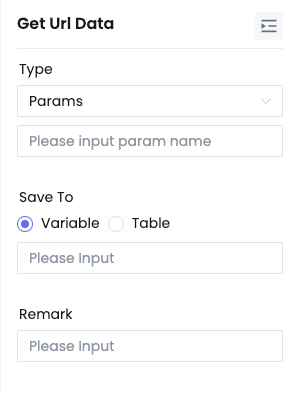
Parameter | Explanation |
|---|---|
| Type - Full Url | Extraction results: https://www.amazon.com/s?k=nike&ref=nb_sb_noss_2 |
| Type - Domain | Extraction results: https://www.amazon.com |
| Type - Parameter | If the input parameters are: k Extraction result: nike |
| Save to | Save the read value to a variable or table |
Get Element Data
Obtaining element data is one of the most frequently used operation options, often used to obtain web page elements and then save them as variables. The saved variables can be used in the operation options that support 'variables'. 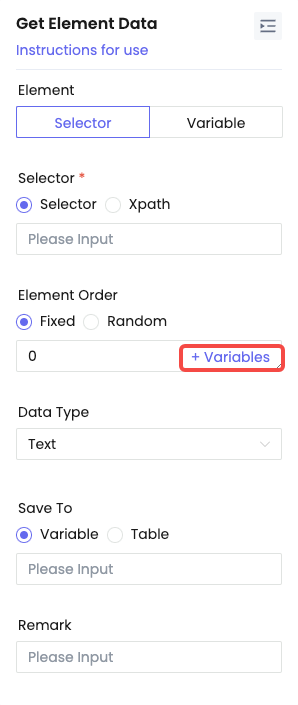
Parameter | Explanation |
|---|---|
| Selector | Input element selectors, such as #email, input [type = "password"], .button_search, etc. Selector usage can refer to: https://developer.mozilla.org/docs/Learn/CSS/Building_blocks/Selectors |
| Variable | Select a variable to save as an object |
| Element Order | Fixed: select elements in a fixed order Random: Randomly select an element within the set interval |
| Data Type | See table below |
| Save To | Save the read value to a variable or table. Data values of element type can only be saved to variables. |
Data Type
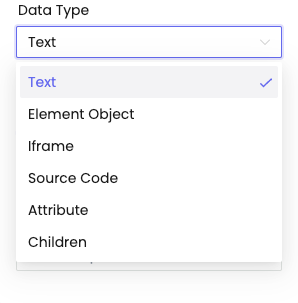
Parameter | Explanation |
|---|---|
| Text | Get the innerText of the target element |
| Element Object | Get the target element and save it as an element object in a variable |
| Iframe | Similar to obtaining an element object, obtain the target element and save it as an iframe element object in a variable |
| Source code | Get the source code of the target object, here referring to the HTML structure of the element |
| Attribute | To obtain the property value of the target object, you need to fill in the property name. |
| Children | Get the child elements of the target element and save it as an element object in a variable, and fill in the element selector of the child element |
Save To File
Usage scenario: Save the obtained variable or table data to a file. 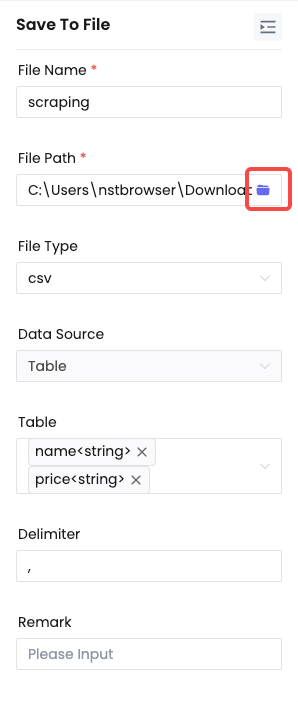
Parameter | Explanation |
|---|---|
| File Name | The name of the file to be saved, required |
| File Path | The path of the file to be saved is required. You can click the quick selection path on the right side in the Client. |
| File Type | Optional: txt, csv, json |
| Data Source | To save the data source of the content, you can choose: variable, table. If the file type is csv, only table can be selected. |
| Variable | Select the variable to save to the file, multiple options are available |
| Table | Select the table contents to save to the file, multiple options are available |
| File Type -txt-content | The content to be saved to txt can be freely written or used with variables |
| File Type-CSV-separator | Delimiter of csv file, default ',' |
Save To Excel
Usage scenario: Save the obtained variable or table data to an excel file. 
Parameter | Explanation |
|---|---|
| File Name | File name to save |
| File Path | To save the file path, you can click Quick Path on the right side in the Client. |
| Select Columns | Select the columns to save to Excel. If selecting a variable, use the variable name as the header of this column. If selecting a table, use the table column name as the header of this column. |
Get Focus Element
Usage scenario: Get the focused element in the current page and save it to a variable 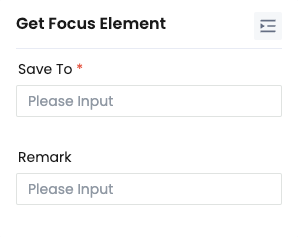
Listen Request
Usage scenario: Listen to the sending of a network request and obtain specified data, such as the complete Url, Params, Body. 
Parameter | Explanation |
|---|---|
| Url | Request Url to listen |
| Extraction Type | Optional: Full Url, Params, Body Params and Body need to fill in the specific field names that need to be extracted. If not filled in, all data will be extracted by default. |
| Save To | Save the read value to a variable or table. |
Listen Response
Usage scenario: Listen to the return of a network request and get the specified data. 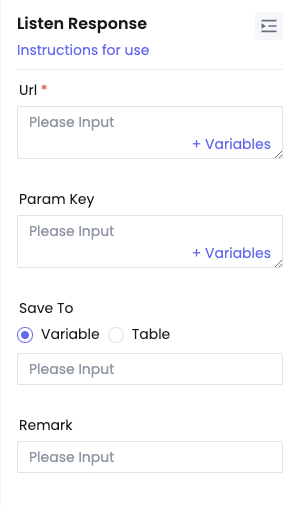
Parameter | Explanation |
|---|---|
| Url | Url to listen |
| Param Key | The field name to be extracted. If not filled in, all return values will be extracted by default. |
| Save To | Save the read value to a variable or table. |
Stop Listener
Usage scenario: Stop the currently enabled listening 